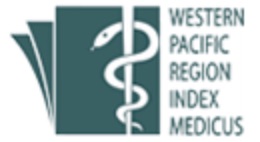Validity Of Mothers’ Caries Screening Of Their Preschool Children And Its Relationship To Sociodemographic Backgrounds
DOI:
https://doi.org/10.31436/imjm.v16i2.1120Abstract
Introduction: Mothers can be trained to screen caries in their children. The aim of this study is to assess the validity of mothers’ caries screening of their preschool children. Materials and Methods: 81 volunteer mothers of four- and five-year-old preschool children, from four kindergartens in Pahang were included this study. All mothers were trained by a dentist to detect caries in preschoolers based on a simplified caries detection guideline by WHO (1997) in a three-hour course. Subsequently, all mothers screened their own children caries status at the workshop and 24 hour later, at home. The validity of the results was determined by comparing mothers’ to dentist’s findings; and calculating their sensitivity, specificity, positive predictive and negative predictive values at child and tooth levels. Results: Caries prevalence among the children was 88.9%, with mean dmft of 7.10 (sd 5.07). At the workshop, mothers’ screening sensitivity, specificity, positive predictive and negative predictive values at child level were 93.1%, 66.7%, 95.7%, 54.5%; and at tooth level were 76.6%, 94.0%, 90.4% and 87.8%, respectively. 24 hours post-workshop screening’s sensitivity, specificity, positive predictive and negative predictive values at tooth level were 76.1%, 93.7%, 90.7% and 87.9% respectively. The reliability of 24 hours post- workshop screening at tooth level was almost perfect (kappa=0.84). No significant relationship was reported between validity of screening and mothers' age, educational status, household income and area of residence. Conclusion(s): The validity of mothers’ screening in this sample was adequate in identifying caries in their preschool children, regardless of their sociodemographic backgrounds.
Downloads
Downloads
Published
How to Cite
Issue
Section
License
All material submitted for publication is assumed to be submitted exclusively to the IIUM Medical Journal Malaysia (IMJM) unless the contrary is stated. Manuscript decisions are based on a double-blinded peer review process. The Editor retains the right to determine the style and if necessary, edit and shorten any material accepted for publication.
IMJM retain copyright to all the articles published in the journal. All final ‘proof’ submissions must be accompanied by a completed Copyright Assignment Form, duly signed by all authors. The author(s) or copyright owner(s) irrevocably grant(s) to any third party, in advance and in perpetuity, the right to use, reproduce or disseminate the research article in its entirety or in part, in any format or medium, provided that no substantive errors are introduced in the process, proper attribution of authorship and correct citation details are given, and that the bibliographic details are not changed. If the article is reproduced or disseminated in part, this must be clearly and unequivocally indicated.










